A damper actuator is a critical component for managing airflow in heating, ventilation, and air conditioning (HVAC) systems. It operates by altering the orientation or position of dampers within ducts or chimneys, thereby controlling the circulation of air or exhaust gases. Damper actuators are vital for an effective and adaptive environmental control system, guaranteeing that air distribution is tailored efficiently to the varying requirements of distinct areas in a facility or edifice.
Types and Characteristics of Damper Actuators
There exists a variety of damper actuators, each with unique features. Electric damper actuators are prized for their precision and ease of integration with contemporary control systems. They come in a range of designs, from basic on/off to intricate modulating versions, complete with feedback signals for advanced systems. Pneumatic damper actuators, which operate on compressed air, boast exceptional dependability and are preferred in explosive environments due to their lack of electrical components. Manual damper actuators offer an economical alternative when remote operation is unnecessary, and hands-on control is suitable or desired. The selection among these types hinges on multiple considerations, such as the specific demands of the HVAC system, the desired level of control, and the operational environment.
Structure and Operation of Damper Actuators
The architecture of a damper actuator is intricately crafted to deliver dependable performance. Central to the actuator is the motor, which is customized to meet the power and torque needs of the application. The gear train linked to the motor is engineered to afford the requisite mechanical advantage, enabling the actuator to manipulate dampers against substantial airflow resistance. The linkage assembly, often adaptable, affixes the actuator to the damper, converting rotational motion into the linear action needed to modify the damper's stance. Advanced models may incorporate circuits to process control signals and to relay the damper's status back to the building management system.
Materials and Properties of Damper Actuators
Material selection for damper actuators is a pivotal aspect of their design. Metals such as aluminum alloy and stainless steel are selected for their durability and corrosion resistance, qualities crucial for the actuator's longevity under diverse environmental conditions. Plastics are frequently employed for internal gears and casings where metal is superfluous, offering cost benefits and a reduction in the device's weight. The chosen materials' attributes, including thermal stability, impact resilience, and tensile strength, are aligned with the application's demands to guarantee consistent reliability over the actuator's service life.
Business Usages and Applications of Damper Actuators
Damper actuators are deployed across a broad spectrum of commercial environments. In manufacturing facilities, they are indispensable for sustaining precise environmental conditions, pivotal for product integrity. Building material outlets utilize them to regulate ventilation, aiding in the expulsion of particulates and vapors. Restaurants and hotels employ them to maintain agreeable indoor climates and air purity for guest comfort. The use of damper actuators in these contexts not only augments the operational efficacy of HVAC systems but also contributes to energy conservation and heightened health standards, priorities of increasing significance in contemporary commerce.
Functions and Tasks of Damper Actuators
The damper actuator is engineered to execute a multitude of tasks pertaining to airflow management. Its principal role is to modulate the positioning of dampers within HVAC ductwork, regulating air volume and direction. In fire safety mechanisms, damper actuators perform the vital function of automatically sealing dampers to inhibit the propagation of smoke and flames, a capability that can safeguard lives and property. In industrial contexts, they manage the expulsion of noxious gases, ensuring workplace safety. The specific functions of a damper actuator are dictated by its construction and the requirements of the system it serves.
Features and Unique Selling Points of Damper Actuators
The array of features in damper actuators is extensive, addressing a multitude of needs. Certain actuators provide modulating control, enabling incremental adjustments to damper positions for precise airflow and pressure regulation within the system. Fail-safe functionalities are paramount, ensuring that dampers revert to a safe position in the event of power or signal disruptions. Additionally, smart actuators may feature network connectivity, affording remote oversight and management—a boon for facility management teams aiming to optimize operations and enhance system reactivity.
Benefits and Positive Outcomes of Damper Actuators
The advantages of employing damper actuators in HVAC and related systems are numerous. They bolster energy efficiency by ensuring that heating and cooling efforts are directed appropriately, thus diminishing operational expenses. The fine control afforded by these actuators also elevates indoor comfort, potentially boosting workplace productivity and enriching customer experiences in commercial venues. Moreover, the safety benefits of damper actuators, especially in their role within fire suppression frameworks, are profound, offering essential functions in emergencies.
How to Use and Maintain Damper Actuators
Optimal utilization of a damper actuator commences with proper installation and calibration, confirming its intended functionality. Regular upkeep is essential and should encompass inspections for wear, validation of control signal response, and verification that damper blades are unobstructed. Cleaning is also a critical maintenance task, as accumulations of dust and debris can impair actuator performance. Adherence to the manufacturer's guidelines for usage and maintenance will prolong the actuator's lifespan and maintain its operational efficiency.
How to Choose and Install Damper Actuators
Choosing the appropriate damper actuator necessitates a comprehensive understanding of the system's requirements, including damper dimensions and type, control range, and environmental conditions of the actuator's operation. Installation must be executed following the manufacturer's specifications, ensuring correct alignment and securement to the damper, as well as the safe and accurate connection of electrical components. It is also crucial to maintain the actuator's accessibility for maintenance and to prevent interference with other system elements.
Target Audience and Customization for Damper Actuators
The intended market for damper actuators encompasses HVAC professionals, building administrators, and system integrators in need of dependable and efficient airflow control components. Alibaba.com serves this demographic by offering an assortment of customization options, enabling these experts to specify actuators that conform precisely to their application's demands. Whether the requirement is for a straightforward manual actuator for a modest setup or an advanced, networked actuator for an extensive commercial complex, Alibaba.com presents the necessary choices to secure an ideal solution.
What are the customization options for damper actuators?
Alibaba.com provides damper actuators with a range of customization possibilities to satisfy particular needs. Tailored support encompasses OEM, ODM, and OBM services, permitting businesses to configure actuators to their exclusive specifications. Options for materials, protective attributes, and design styles can all be modified to suit the intended use and branding requirements.
What after-sale services are available for damper actuators?
Following the acquisition of damper actuators on Alibaba.com, customers can anticipate various after-sale services. Offerings may include onsite evaluations, instructional sessions, installation assistance, and in certain instances, return and replacement provisions. These services are instrumental in ensuring correct installation and optimal performance of the actuators, providing buyers with assurance.
How do damper actuators contribute to energy efficiency?
Damper actuators significantly aid in energy preservation by enabling precise control over airflow. This accuracy permits HVAC systems to function with greater efficiency, curtailing energy usage and associated costs. By guaranteeing that air is channeled only where necessary and in the correct amounts, damper actuators play a crucial role in the sustainable operation of building management systems.
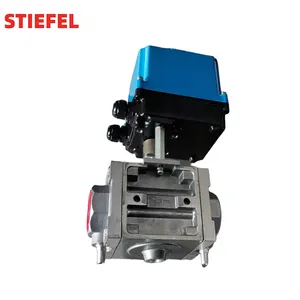

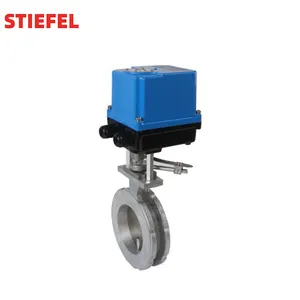



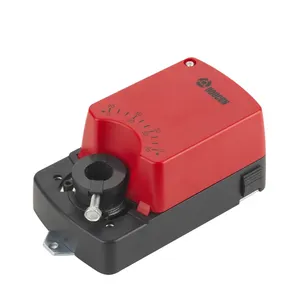


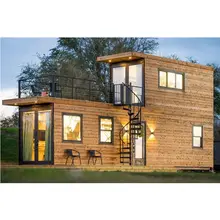

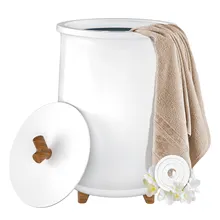


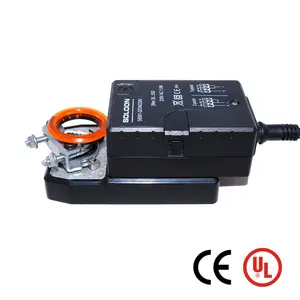



























 浙公网安备 33010002000092号
浙公网安备 33010002000092号 浙B2-20120091-4
浙B2-20120091-4